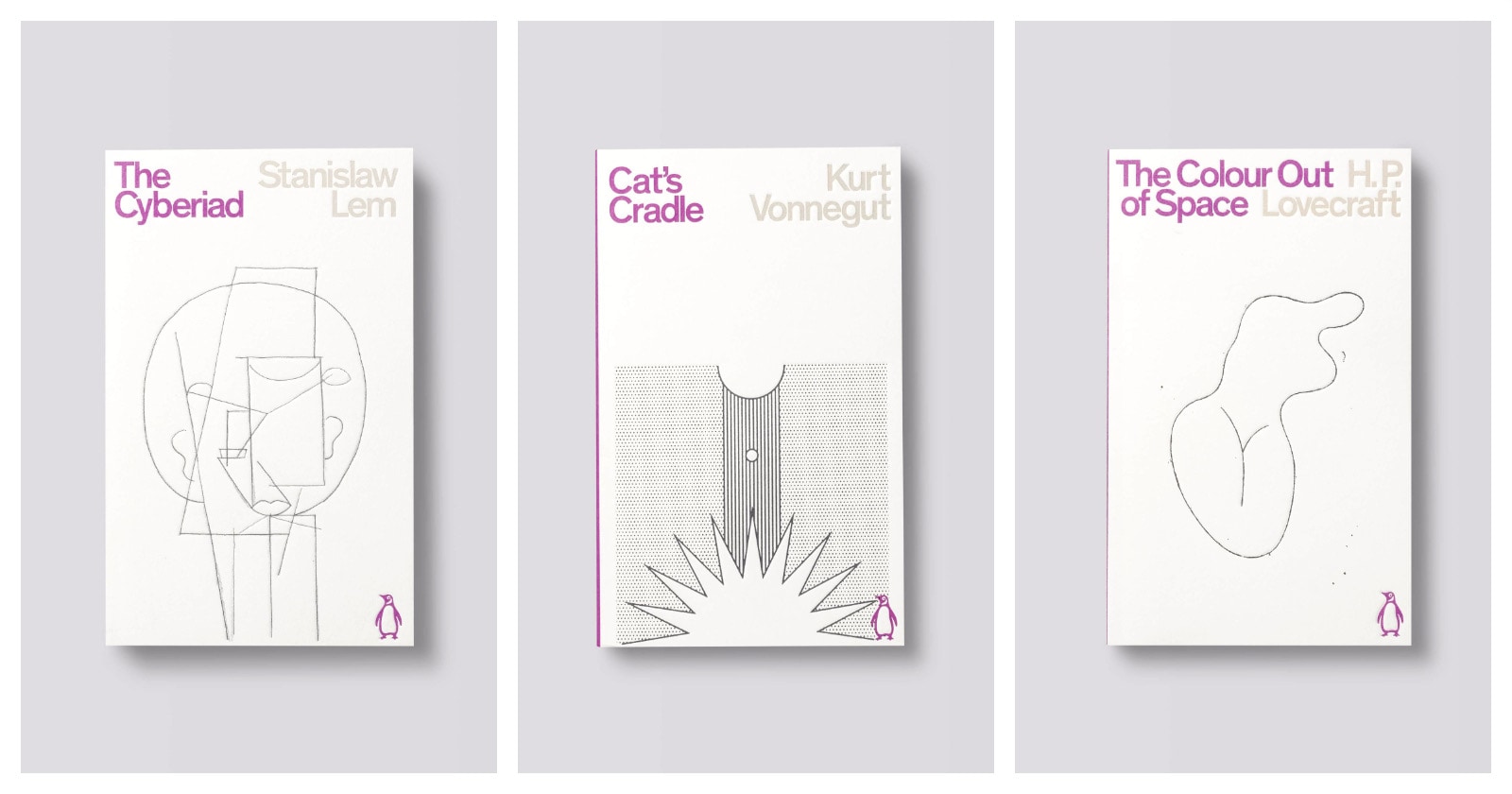
The new Penguin Classics Science Fiction collection comprises ten different authors – all united by wonderfully minimalist monochromatic cover design.
When we think of stereotypical mainstream science fiction, first thing that comes to mind is old-school pulp fiction magazines with bright covers and dashing space warriors saving damsels in distress from brutish aliens.
Or, maybe, wrinkled retro paperbacks in psychedelic color combinations and Dali-like surrealist scenes. Or, perhaps, a bit more modern cover styles, with the titles written in bold metallic font and manly figures heroically staring into space against a cosmic landscape.
All in all, regardless of the era, we tend to think of science fiction book covers as eye-catching, eccentric and fluorescent, with unfamiliar worlds, busy supernatural scenes and futuristic spaceships as their focal points.
But today, Penguin Random House decided to challenge this approach as it introduced a brand-new minimalist design for its 2020 Classics Science Fiction series.
The collection includes ten books written by authors from all around the world, all unified by refreshingly minimal line drawings, sparse designs, monochromatic color schemes, and purple spines. It brings together pioneers like Lovecraft and Zamyatin, New Wave classics by Lem and Vonnegut, and a plethora of different exciting subgenres, including dystopia, satire, slipstream, and speculative fiction. Some covers even feature works by line drawing virtuosos like Le Corbusier, Hans Arp, Picasso, and Saul Steinberg.

“There is perhaps a tradition for science fiction books to illustrate unfamiliar conceptualized worlds on their covers,” Penguin art director Jim Stoddart explains. “But when judging a book by its cover, even with all the best intentions, I really feel representational depiction often doesn’t do the writing justice, and perhaps unfairly ghettoises some amazing books which should have a much broader appeal.”
Refreshingly uncluttered, the covers give plenty of breathing space for the readers to dive deep into the depths of their imagination – after all, that’s what sci-fi’s for.
“These books are existentially mind-bending and the action best takes place in the imagination. It felt right to let the role of these covers be simply to allude to the pages held within, rather than illustrate them,” Stoddart explains.
Check out Penguin’s brilliant new minimalist science fiction collection below.
Penguin Classics Science Fiction collection
The Penguin Science Fiction series travels to the limits of the human imagination with a selection of visionary works from around the world. Here are pioneering works by Lovecraft and Zamyatin; New Wave classics by Lem and Vonnegut; and essential examples of space opera, dystopia, slipstream and speculative fiction from the great science fiction writers of Russia, Argentina, Germany and beyond.
1

Cat’s Cradle by Kurt Vonnegut
This bitterly funny Cold War satire on the end of the world expresses our deepest fears of Armageddon, and has become a counter-culture classic.
2
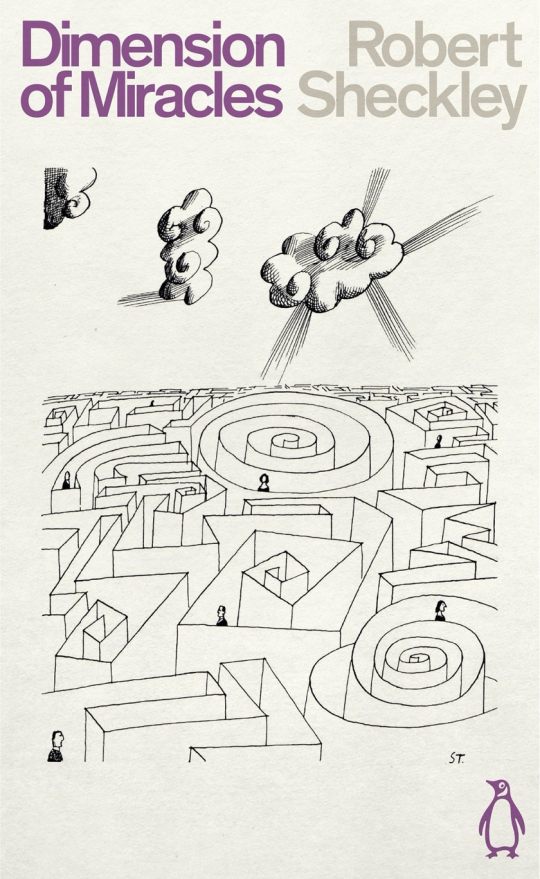
Dimension of Miracles by Robert Sheckley
This madcap cosmic farce relates the adventures of the hapless human Carmody, as he attempts to make his way home to Earth after winning the grand prize in the Intergalactic Sweepstake, encountering parallel worlds, incompetent bureaucrats and talking dinosaurs on the way.
3

Flatland by Edwin Abbott
The book that influenced writers from Carl Sagan to Stephen Hawking, Flatland is set in a two-dimensional world where life exists only in lines and shapes – until one of its inhabitants, ‘A. Square’, has his perspective transformed forever. This brilliantly eccentric classic is an invitation to see beyond our own reality.
4

One Billion Years to the End of the World by Arkady and Boris Strugatsky
This mordantly funny and provocative tale from Soviet Russia’s leading science fiction writers is the story of astrophysicist Dmitri Malianov.
As he reaches a major breakthrough, he finds himself plagued by interruptions, from a mysterious crate of vodka to a glamorous woman on his doorstep. Is the Universe trying to tell him something?
5

Ten Thousand Light-Years From Home by James Tiptree Jr.
Written under the pseudonym James Tiptree Jr., the pioneering and outlandish tales of Alice B. Sheldon are some of the greatest science fiction short stories of the twentieth century, telling of dystopian chases, alien sex and the loneliness of the universe.
6

The Colour Out of Space by H.P. Lovecraft
The master of weird fiction, H. P. Lovecraft combines cosmic fantasy with creeping horror in these three tales of malevolent alien forces, body-switching and travel across the space-time continuum.
7
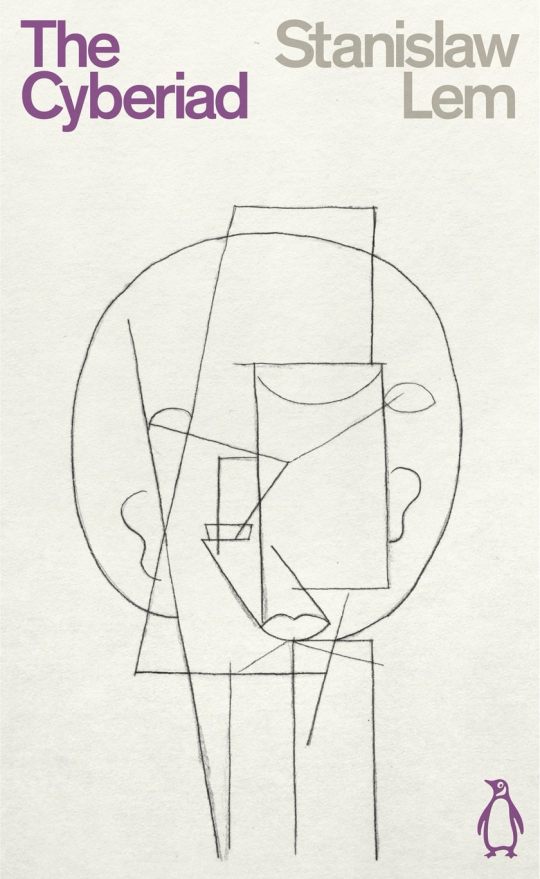
The Cyberiad by Stanislaw Lem
One of the world’s most beloved science fiction writers, Stanislaw Lem was famed for his wryly comic, outlandish imaginings of the relationship between humans and technology.
In this playful cosmic fantasia, two ‘constructors’ compete to dream up ever-more ingenious inventions in a universe beyond reality.
8
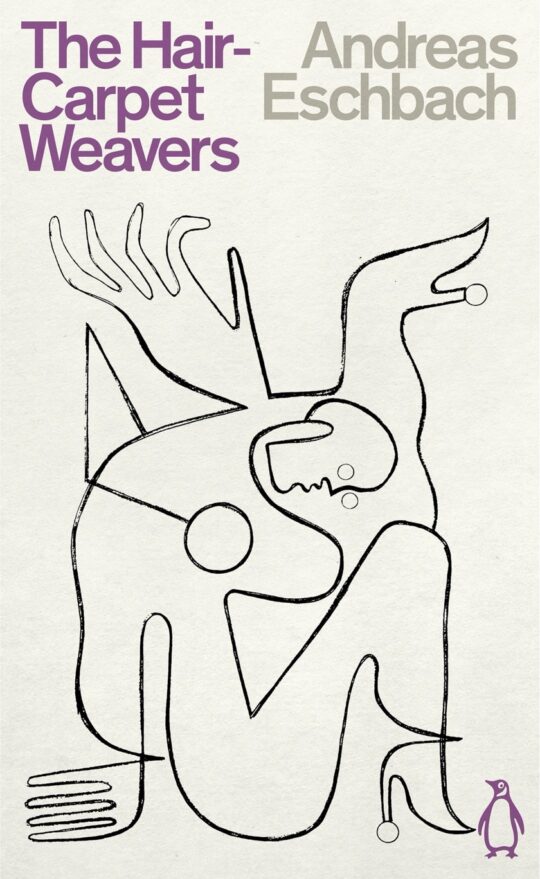
The Hair-Carpet Weavers by Andreas Eschbach
In a distant universe, since the beginning of time, workers have spent their lives weaving intricate carpets from the hair of women and girls. But why? Andreas Eschbach’s mysterious, poignant space opera explores the absurdity of work and of life itself.
9
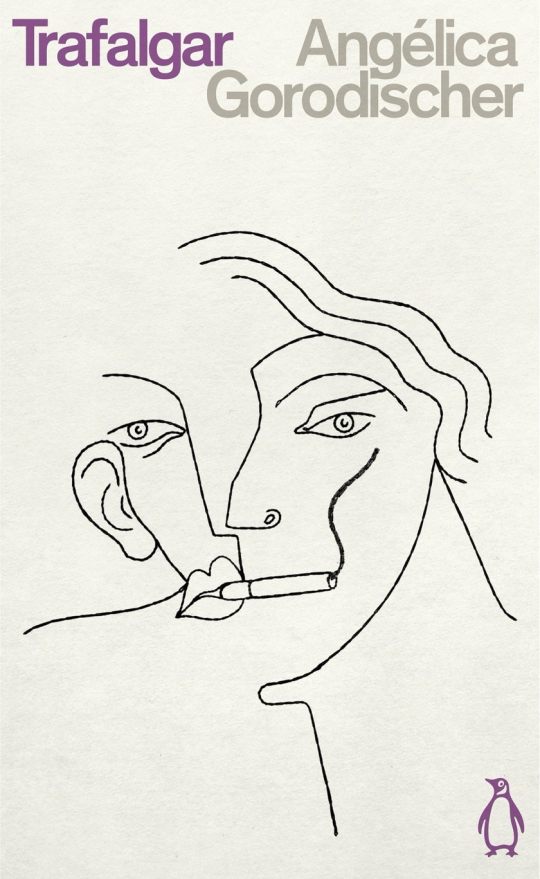
Trafalgar by Angélica Gorodischer
Part pulp adventure, part otherworldly meditation, this is the story of Trafalgar Medrano: intergalactic trader and lover of bitter coffee and black cigarettes.
In the bars and cafés of Rosario, Argentina, he recounts tall tales of his space escapades – involving, among other things, time travel and dancing troglodytes.
10
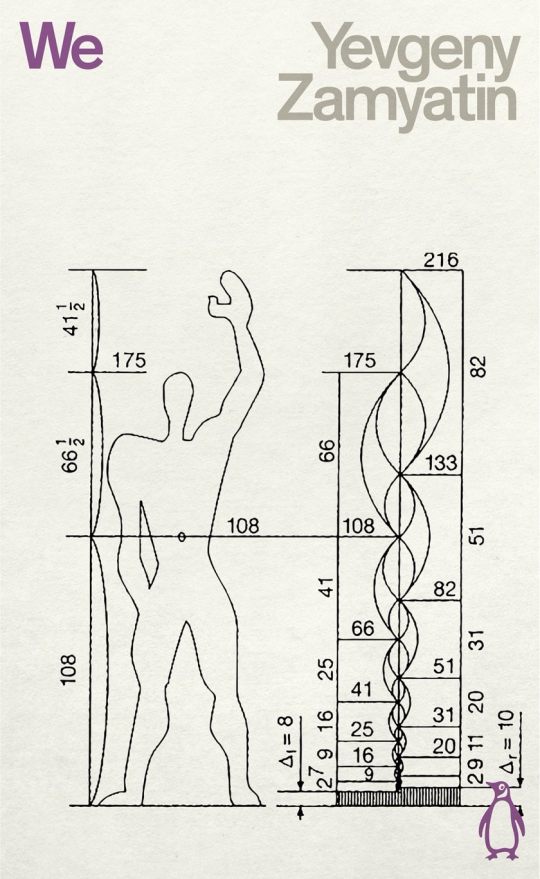
We by Yevgeny Zamyatin
The dystopian masterwork that inspired George Orwell’s Nineteen Eighty-Four, We depicts a futuristic totalitarian society, ‘OneState’, where humans have become numbers. Suppressed in Russia for decades, it is a chilling vision of a world enslaved by technology.
Via Creative Review.
More to check out:
[ef-archive number=5 tag=”lists”]








Leave a Reply